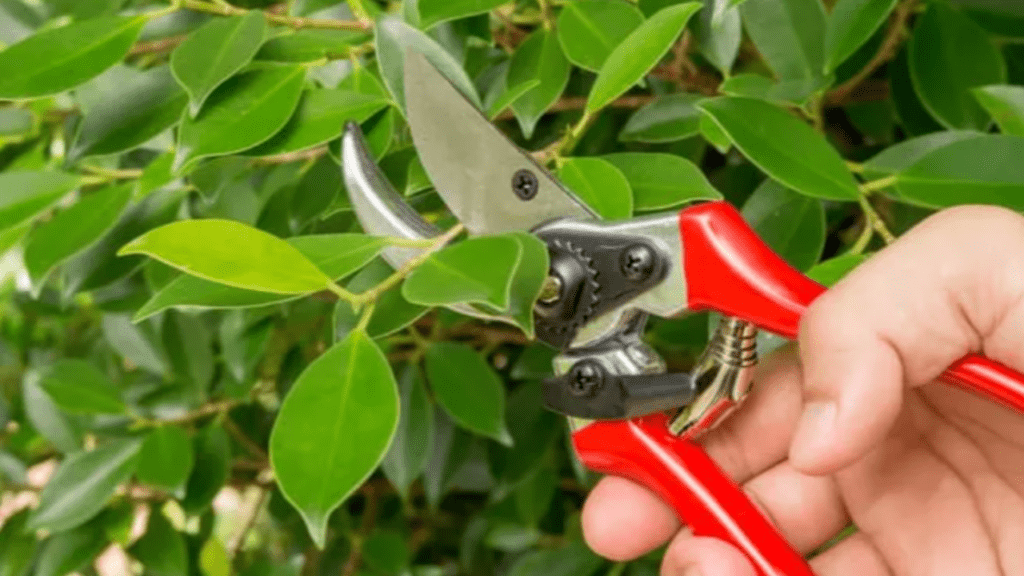
Pruning Rubber Tree: A Step-by-Step Guide for Healthy Growth
Pruning rubber tree is an important step in maintaining its health and shape. In this post, we will provide you with a detailed, step-by-step guide on how to properly prune your rubber tree to ensure healthy growth. We will also discuss the benefits of pruning and common mistakes to avoid, so you can confidently care for your rubber tree. Whether you are a seasoned plant enthusiast or a beginner looking to learn more about plant care, this guide will provide you with the knowledge and tools you need to successfully prune your rubber tree.
Table of Contents
ToggleWhy Pruning is Essential for Rubber Trees
Overview of the benefits of pruning: shape control, removing dead or diseased branches, encouraging new growth.
Pruning your rubber tree is essential for maintaining its health and promoting healthy growth. One of the main benefits of pruning is shape control. By removing excess growth and shaping the tree, you can maintain a desirable and attractive appearance. Additionally, pruning helps to remove dead or diseased branches, which can prevent the spread of disease and promote overall plant health. Pruning also encourages new growth, resulting in a fuller and healthier rubber tree. It’s important to prune your rubber tree regularly to ensure that it thrives and continues to grow in a healthy manner. By following the proper pruning techniques, you can help your rubber tree reach its full potential and enjoy a long and healthy life.
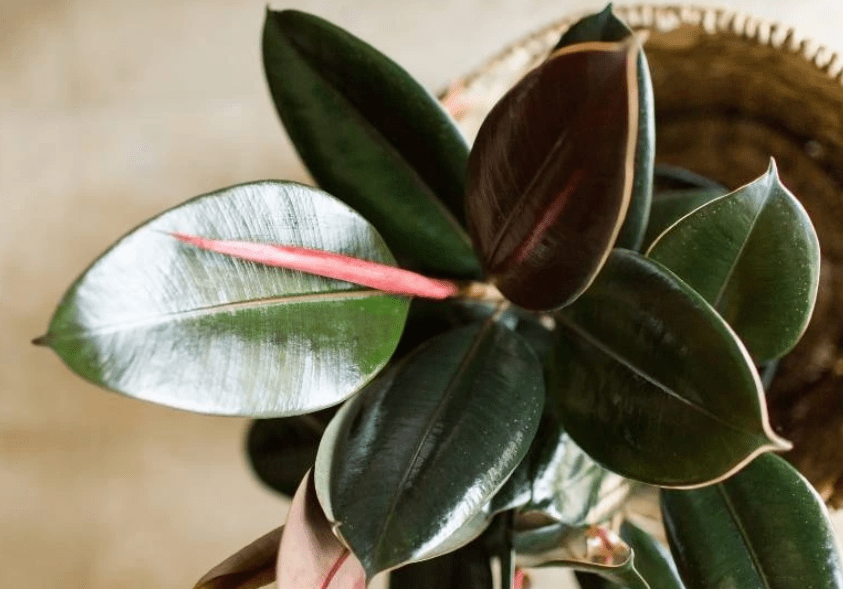
When to Prune a Rubber Tree
Best time of year to prune (typically in spring or early summer).
Pruning your rubber tree is essential for maintaining its health and promoting healthy growth. One of the main benefits of pruning is shape control. By removing excess growth and shaping the tree, you can maintain a desirable and attractive appearance. Additionally, pruning helps to remove dead or diseased branches, which can prevent the spread of disease and promote overall plant health. Pruning also encourages new growth, resulting in a fuller and healthier rubber tree. It’s important to prune your rubber tree regularly to ensure that it thrives and continues to grow in a healthy manner. By following the proper pruning techniques, you can help your rubber tree reach its full potential and enjoy a long and healthy life. The best time of year to prune a rubber tree is typically in the spring or early summer, when the tree is actively growing. This is when the tree has the most energy and can easily recover from the pruning process. It’s also best to avoid pruning in the fall or winter, as the tree is dormant during these times and may not respond well to pruning. By pruning your rubber tree at the right time, you can ensure that it continues to grow and thrive for years to come.
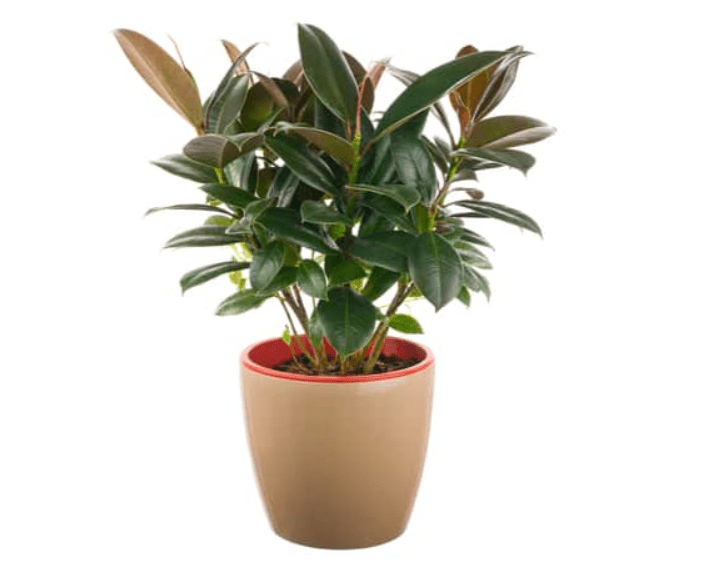
Signs that indicate your Rubber Tree needs pruning.
Pruning your rubber tree is an important aspect of its care and maintenance. The first sign that your rubber tree needs pruning is if it has become overgrown or is starting to look unruly. This can indicate that it is time to trim back some of the branches to maintain a more manageable size and shape. Another sign is if the tree is showing signs of disease or pest infestation. Pruning away affected branches can help prevent the spread of disease and remove any areas that may be harboring pests. Additionally, if your rubber tree is growing unevenly or has areas of excessive growth, pruning can help balance out the tree and encourage more uniform growth. Finally, if your rubber tree is not producing new growth or is starting to look sparse or leggy, pruning can help encourage new growth and result in a fuller, healthier tree. By keeping an eye out for these signs and regularly pruning your rubber tree, you can ensure that it remains vibrant and thriving.
Tools You Need for Pruning Rubber Tree
List of essential tools: sharp pruning shears, gloves, disinfectant.
Pruning your rubber tree is essential for maintaining its health and appearance. To effectively prune your rubber tree, you will need a few essential tools. Sharp pruning shears are necessary for cutting through the rubber tree’s thick and rubbery branches. Make sure to choose a pair of pruning shears that are sharp and sturdy to make clean and precise cuts. Additionally, it is important to wear gloves when pruning your rubber tree to protect your hands from potential thorns or sharp edges. Gloves will also provide a barrier between your skin and any potential irritants. Finally, it is essential to use a disinfectant when pruning your rubber tree to prevent the spread of disease. After each cut, wipe the pruning shears with a disinfectant to ensure that you are not transmitting any potential diseases or infections from one branch to another. By using these essential tools, you can effectively prune and maintain the health and appearance of your rubber tree.
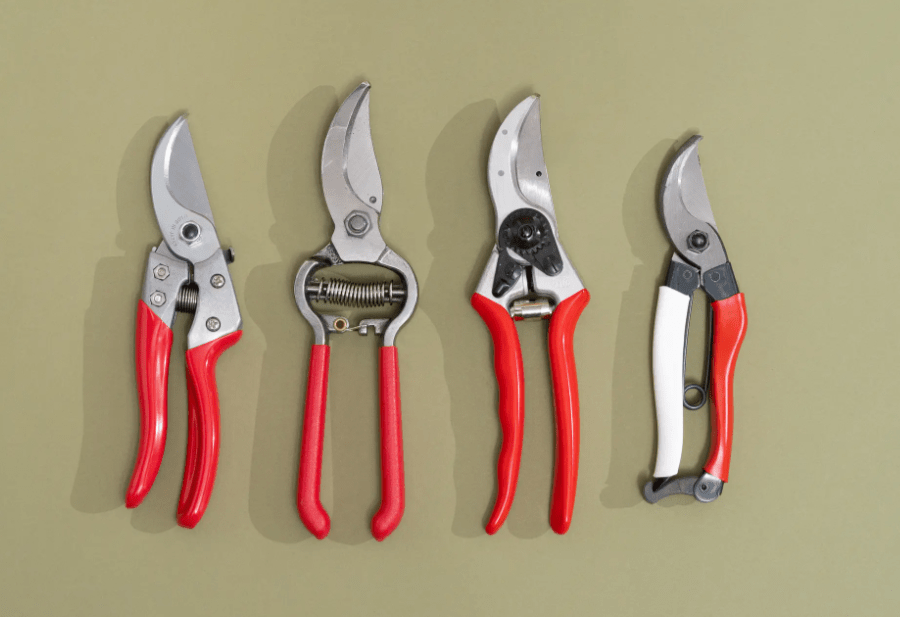
Tips for preparing tools to avoid plant damage or infection.
When preparing to prune your rubber tree, it is important to have the right tools to avoid plant damage or infection. Sharp pruning shears are necessary for cutting through the rubber tree’s thick and rubbery branches. Make sure to choose a pair of pruning shears that are sharp and sturdy to make clean and precise cuts, which will promote the healthy growth of your plant. Additionally, it is important to wear gloves when pruning your rubber tree to protect your hands from potential thorns or sharp edges. Gloves will also provide a barrier between your skin and any potential irritants that may be present on the plant. Finally, it is essential to use a disinfectant when pruning your rubber tree to prevent the spread of disease. After each cut, wipe the pruning shears with a disinfectant to ensure that you are not transmitting any potential diseases or infections from one branch to another. By using these essential tools and taking these precautions, you can effectively prune and maintain the health and appearance of your rubber tree without causing any damage or introducing harmful infections.
Step-by-Step Guide to Pruning Rubber Tree
Step 1: Assess the plant and decide which branches to prune.
To effectively prune your rubber tree, it is important to assess the plant and decide which branches to prune. Look for any dead, damaged, or diseased branches that need to be removed. Additionally, consider the overall shape and size of the plant and determine if any branches need to be trimmed to maintain a balanced and attractive appearance. It is important to use sharp pruning shears for cutting through the rubber tree’s thick and rubbery branches. Make sure to choose a pair of pruning shears that are sharp and sturdy to make clean and precise cuts, which will promote the healthy growth of your plant. Additionally, it is important to wear gloves when pruning your rubber tree to protect your hands from potential thorns or sharp edges. Gloves will also provide a barrier between your skin and any potential irritants that may be present on the plant. Finally, it is essential to use a disinfectant when pruning your rubber tree to prevent the spread of disease. After each cut, wipe the pruning shears with a disinfectant to ensure that you are not transmitting any potential diseases or infections from one branch to another. By using these essential tools and taking these precautions, you can effectively prune and maintain the health and appearance of your rubber tree without causing any damage or introducing harmful infections.
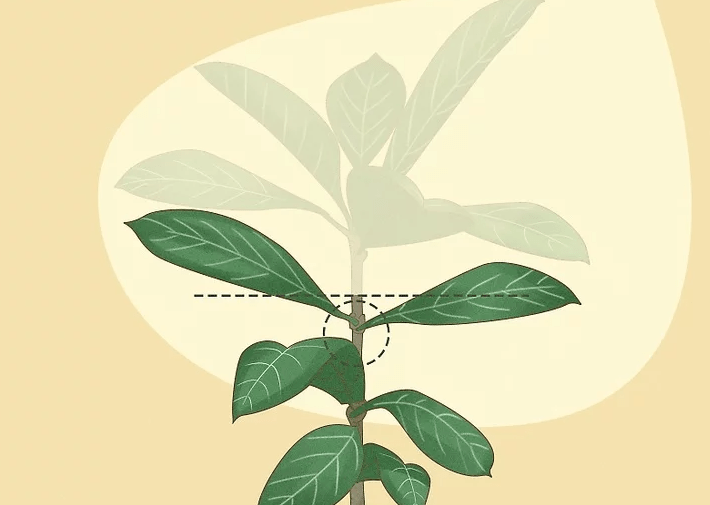
Step 2: Disinfect your tools to prevent disease.
When it comes to pruning your rubber tree, using sharp and clean tools is essential for promoting the plant’s healthy growth. Sharp pruning shears will make clean and precise cuts through the thick and rubbery branches, reducing the risk of damaging the plant. It’s also important to wear gloves while pruning to protect your hands from potential thorns or sharp edges, as well as any irritants that may be present on the plant. Additionally, using a disinfectant to clean your pruning shears after each cut is crucial to prevent the spread of disease. This simple step can help ensure that you’re not inadvertently transferring any infections from one branch to another. By using the right tools and taking these precautions, you can effectively care for your rubber tree without causing any harm or introducing harmful infections.
Step 3: Make precise cuts to remove unwanted branches.
When it comes to pruning your rubber tree, it’s important to make precise cuts to remove any unwanted branches. Using sharp and clean tools is essential for promoting the plant’s healthy growth. Sharp pruning shears will make clean and precise cuts through the thick and rubbery branches, reducing the risk of damaging the plant. It’s also important to wear gloves while pruning to protect your hands from potential thorns or sharp edges, as well as any irritants that may be present on the plant. Additionally, using a disinfectant to clean your pruning shears after each cut is crucial to prevent the spread of disease. This simple step can help ensure that you’re not inadvertently transferring any infections from one branch to another. By using the right tools and taking these precautions, you can effectively care for your rubber tree without causing any harm or introducing harmful infections.
Step 4: Prune for shape – guiding the plant’s growth direction.
Pruning your rubber tree is an important part of guiding the plant’s growth direction and promoting its overall health. When pruning, it’s essential to make precise cuts to remove any unwanted branches and shape the plant. To do this, it’s important to use sharp and clean pruning tools. Sharp pruning shears will make clean and precise cuts through the thick and rubbery branches, reducing the risk of damaging the plant. Additionally, wearing gloves while pruning can protect your hands from potential thorns or sharp edges, as well as any irritants that may be present on the plant. It’s also crucial to use a disinfectant to clean your pruning shears after each cut to prevent the spread of disease from one branch to another. By taking these precautions and using the right tools, you can effectively care for your rubber tree and promote its healthy growth and shape.
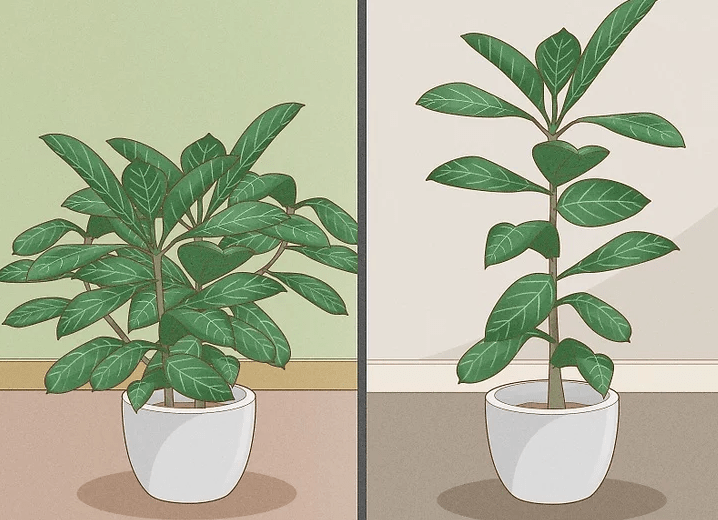
Step 5: Post-pruning care: water and light requirements, fertilization.
After pruning your rubber tree, it’s important to provide the proper post-pruning care to ensure the plant’s health and growth. Watering and light requirements are essential to consider after pruning. Make sure to water the plant thoroughly, but allow the soil to dry out slightly between waterings to prevent overwatering. Rubber trees also require bright, indirect light to thrive, so be sure to place the plant in a location where it can receive adequate sunlight. If necessary, you can also consider using a grow light to supplement the plant’s light needs.
Fertilization is another important aspect of post-pruning care for your rubber tree. After pruning, the plant may benefit from a balanced, all-purpose fertilizer to provide essential nutrients for healthy growth. Be sure to follow the instructions on the fertilizer label and avoid over-fertilizing, as this can lead to nutrient imbalances and potential damage to the plant. With proper post-pruning care, your rubber tree can continue to thrive and maintain its shape and health for years to come.
Common Mistakes to Avoid When Pruning Rubber Tree
Over-pruning or under-pruning.
Proper pruning is essential for the health and growth of your rubber tree. Over-pruning can lead to the plant becoming weak and prone to disease, while under-pruning can result in a lack of air circulation and light penetration. It’s important to find the right balance when pruning your rubber tree to promote healthy growth. After pruning, it’s important to provide the plant with proper care to support its recovery and continued growth. This includes ensuring the plant receives adequate water, light, and fertilization. By following these post-pruning care tips, you can help your rubber tree thrive and maintain its health and shape.
Using dull or unclean tools.
Using dull or unclean tools for pruning can cause damage to the rubber tree. Dull tools can tear and crush the plant tissue, leading to slow healing and increased risk of disease. Unclean tools can spread pathogens and pests from one plant to another. It’s important to regularly sharpen and sanitize your pruning tools to ensure clean and precise cuts. This will help promote faster healing and reduce the risk of disease transmission. Additionally, using the right tools for the job, such as sharp pruning shears or loppers, can make the pruning process easier and more effective. Remember to clean your tools with a solution of 70% rubbing alcohol or a 10% bleach solution between each cut or between different plants to prevent the spread of pathogens. Taking care of your tools will not only benefit the health of your rubber tree but also improve the overall efficiency of your pruning efforts.
Pruning at the wrong time of year.
Pruning at the wrong time of year can have negative effects on the health of your plants. It’s important to prune at the right time to promote healthy growth and flowering. Pruning at the wrong time of year can also leave your plants vulnerable to diseases and pests. It’s important to research the specific needs of the plants you are pruning to ensure you are doing so at the optimal time. In general, it’s best to prune during the dormant season for most plants, which is typically late winter or early spring. Pruning during this time allows the plants to heal more quickly and reduces the risk of disease. Avoid pruning during the fall, as this can stimulate new growth that may not have enough time to harden off before the winter months. By understanding the needs of your plants and pruning at the right time, you can help promote their health and vitality.
How to Care for Your Rubber Tree After Pruning
After pruning your rubber tree, it’s important to care for it properly to promote healthy growth. Make sure to water the plant regularly, but be mindful not to overwater it as this can lead to root rot. Keep the soil moist but well-drained. Additionally, provide the plant with adequate sunlight, as rubber trees thrive in bright, indirect light. Fertilize the plant every few months with a balanced fertilizer to provide the necessary nutrients for growth. Keep an eye out for any signs of pests or diseases and address them promptly. By following these care tips, you can help your rubber tree thrive after pruning.
Conclusion
In conclusion, proper pruning of a rubber tree is essential for promoting healthy growth and maintaining its shape. By following the step-by-step guide provided in this post, you can ensure that your rubber tree remains healthy and vibrant. Remember to avoid common mistakes such as over-pruning or cutting too close to the trunk. With the right techniques, your rubber tree will thrive and add beauty to your indoor space.
Frequently asked questions And Answer
The best time to prune a rubber tree is in the spring or early summer when the plant is actively growing.
It’s best to only prune about 1/3 of the plant at a time to avoid stressing it. Focus on removing dead or overgrown branches to promote healthy growth.
You will need sharp, clean pruning shears or scissors to make clean cuts without damaging the plant.
Yes, you can propagate the cuttings from pruning by placing them in water or a potting mix to encourage root growth.
Yes, pruning encourages new growth and can help shape the plant to promote a fuller, healthier appearance.
It’s best to prune your rubber tree as needed, such as when you notice dead or overgrown branches, rather than on a set schedule.
When pruning, make clean cuts just above a leaf node to encourage new growth in the desired direction.
You can use the pruned branches for propagation or even get creative and use them for crafts or decorative arrangements.
